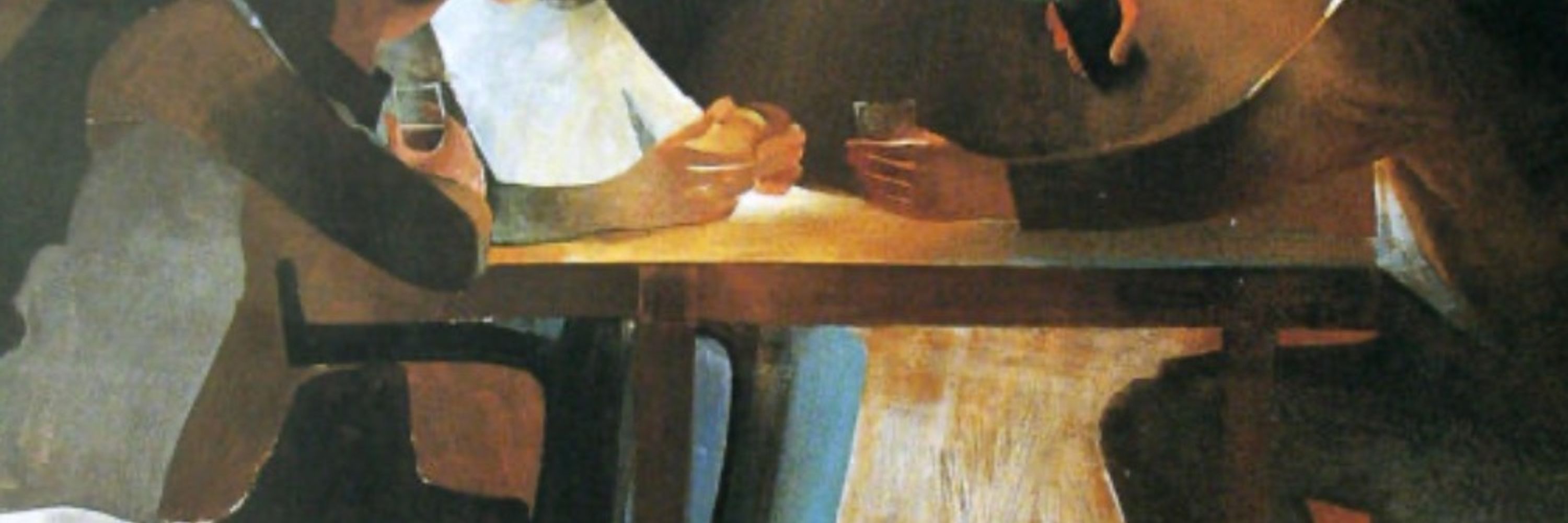Jeremiah Coogan
@jeremiahcoogan.bsky.social
2.8K followers
1.1K following
380 posts
Gospels, material texts, philology, Late Antiquity | Assistant Professor of New Testament
Posts
Media
Videos
Starter Packs
Reposted by Jeremiah Coogan
Reposted by Jeremiah Coogan
Reposted by Jeremiah Coogan
Reposted by Jeremiah Coogan
Reposted by Jeremiah Coogan
Reposted by Jeremiah Coogan
Reposted by Jeremiah Coogan
Reposted by Jeremiah Coogan
Reposted by Jeremiah Coogan
Reposted by Jeremiah Coogan
Reposted by Jeremiah Coogan
Reposted by Jeremiah Coogan


![[204.144.212.78] Project MUSE (2025-10-06 13:09 GMT) The University of lowa
BOOK REVIEWS 493
"metaphor squared," defined as "merging or grafting one upon another" several dulled classical metaphors to restore their luster (131). Ennodius, Merobaudes, and Arator provide the evidence. Helen Kaufmann employs "constructed unity" to counter charges that long-form poetry lacked the "organic unity" idealized by Romantic criticism. She focuses on the allegedly disruptive "descriptive digression, which she repositions as examples of variatio that impart unity (115). Andreas Abel analyzes the "Neoplatonists" (246) Macrobius and Symmachus, illustrating the "macrostructural level" unity (253) yielded by Neoplatonic metaphysics and numerology in works that appear "fragmentary and episodic" (245). Joshua Hartman and Jacob Levernier apply computational analysis to the texts contained in Musisque deoque to show that the count of enumerative lines distributed over time corroborates Robert's "hypothesis" that "single-word enumerations"
are
"more common in late antique poetry" (84).
The book's fourth chapter, Frances Foster's essay addressing how the jeweled style was learned, provides a suitable coda. She suggests that Servius's Vergilian commentary imparts a sense of how students learned poetry and reminds us that Ausonius and the professores he commemorated transmitted the rudiments of poetic composition in this mode to their elite students, which in Ausonius's case included the influential senator turned monastic impresario and Christian poet Paulinus of Nola. The long-term impact of this instruction, practiced in schools throughout the late imperial west, canonized the poetics of the jeweled style, ensuring its persistence for generations to come. In short, this volume confirms the security of the pathways Roberts plotted and points to new ones leading in the same direction: a deeper appreciation of late antique poetry. For scholars of early and late ancient Christianity such an …](https://cdn.bsky.app/img/feed_thumbnail/plain/did:plc:byohyhodi6iknxngf3oypcge/bafkreibualb3pu46nkoqiilw4n45x7jcfwrurgtkxdkwphdajl2ucpqkye@jpeg)









![HGV: P.Oxy. 1 108 [source] [xml]
Title Monthly Meat Bill of a Cook
Publications P.Oxy. 1 108 More in series P.Oxy.More in series P.Oxy., vol. 1
Sel. Pap. I 188
C.Pap. Hengstl 81 (Kol. I und II, Z. 1-10)
Support/Dimensions Papyrus
Post-Concordance BL Entries BL-online; II 2 92
Origin Oxyrhynchos More from Oxyrhynchos
Material Papyrus
Date 28. Sept. 215 (Jahr unsicher) More from the period between 215 CE and 216 CE
Date 28. Sept. 183 (Jahr unsicher) More from the period between 183 CE and 184 CE
Commentary Alternativdatierung: 28. Sept. 183
Mentioned Dates
Kol. I, Z. 1 - Kol. II, Z. 8:30. Aug. - 24. Sept. 183
Kol. I, Z. 1 - Kol. II, Z. 8:30. Aug. - 24. Sept. 215
Kol. II, Z. 12 - 20:11. - 26. Aug. 183
Kol. II, Z. 12 - 20:11. - 26. Aug. 215
Subjects Abrechnung eines Kochs; Fleisch; verschiedene Sorten
Images http://sceti.library.upenn.edu/pages/index.cfm?so_id=4069...
License Creative Commons License © Heidelberger Gesamtverzeichnis der griechischen Papyrusurkunden Ägyptens. This work is licensed under a Creative Commons Attribution 3.0 License.
Trismegistos: 20767 [source]
Publications P. Oxy. 1 108 (Grenfell, Bernard P. / Hunt, Arthur S.; 1898) = Sel. Pap. 1 188 (Hunt, Arthur S. / Edgar, Campbell Cowan; 1932) = Hengstl, Griechische Papyri 81 (Hengstl, Joachim / ; 1978) = Pap. Congr. XXIV (Helsinki 2004) p. 520 (Kritzer, Ruth Elisabeth / ; 2007)
Inv. no. Philadelphia, University of Pennsylvania Museum E 2753
Date AD 183 Sep 28?; or AD 215 Sep 28?
Language Greek
Provenance Egypt, U19 - Oxyrynchos (Bahnasa)[found & written]
People mentioned people
Catalog Record: upenn.apis.8 [xml]
Title Monthly Meat Bill of a Cook
Summary Account of a cook, giving a list of different kinds of meat supplied during Thoth and the latter part of the month preceding. The twenthy-fourth year of an Emperor, who is more probably Caracalla (thus about 215 CE) than Commodus (thus 183 CE), is mentioned. 183 or 215 C.E.
Citations P. Oxy. 1.108 [John R. Abercrombie, �The University Museum�s Collect…](https://cdn.bsky.app/img/feed_thumbnail/plain/did:plc:byohyhodi6iknxngf3oypcge/bafkreigmpbynw734ws4i3rp7mcv6fmimyptdiivta7ugxp6na3acn6a66y@jpeg)







